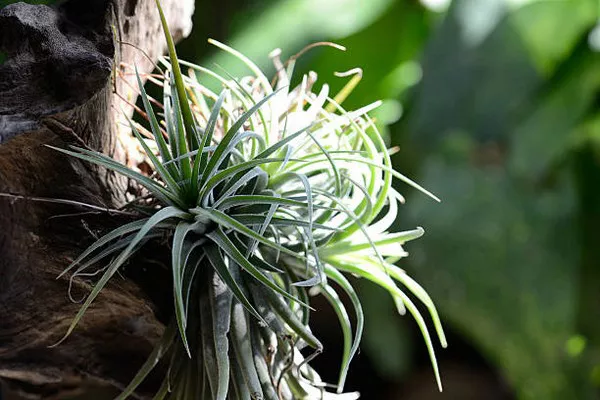Air plants, scientifically known as Tillandsia, have gained immense popularity among indoor plant enthusiasts due to their unique charm and low maintenance requirements. These fascinating plants don’t need soil to thrive, making them a versatile addition to any home or office space. If you’re intrigued by the idea of growing air plants but are unsure where to start, this comprehensive guide will provide you with the knowledge and techniques necessary for their successful cultivation.
Understanding Air Plants
Before delving into the specifics of air plant care, it’s crucial to understand the basics of these remarkable plants. Air plants are epiphytes, which means they naturally grow on other surfaces, such as trees and rocks, in their native habitats of Central and South America. They belong to the Bromeliaceae family and are known for their ability to absorb water and nutrients through specialized trichomes on their leaves.
Selecting the Right Air Plants
When choosing air plants for your collection, consider the following factors:
Species: There are over 650 species of air plants, each with unique characteristics and care requirements. Some common species include Tillandsia ionantha, Tillandsia xerographica, and Tillandsia stricta. Research the specific needs of the species you plan to grow to ensure their optimal care.
Size: Air plants vary in size from tiny Tillandsia bulbosa to larger species like Tillandsia streptophylla. Consider the available space and aesthetic preferences when selecting the size of your air plants.
Appearance: Air plants come in various shapes, colors, and textures. Choose plants that align with your aesthetic preferences and intended display arrangements.
Caring for Air Plants
Air plants are relatively easy to care for, but they do have specific requirements to thrive. Follow these essential care tips:
Light: Air plants thrive in bright, indirect light. Place them near a window with filtered sunlight or provide artificial light with a grow light if natural light is limited. Avoid exposing them to direct sunlight for extended periods, as this can lead to sunburn.
Water: Unlike traditional plants, air plants don’t absorb water through their roots but through their leaves. Mist your air plants with a spray bottle 2-3 times a week to provide them with the necessary moisture. Ensure the plants dry completely within 4 hours after misting to prevent rot.
Water Quality: Use distilled or rainwater for misting your air plants, as tap water may contain minerals that can harm them over time. You can also soak your air plants in water for 30 minutes once a week to supplement their hydration. After soaking, shake off excess water and allow them to dry completely.
Temperature and Humidity: Air plants prefer temperatures between 50°F to 90°F (10°C to 32°C) and thrive in environments with a relative humidity level of 40% to 60%. Avoid exposing them to extreme temperature fluctuations or dry, stagnant air.
Air Circulation: Adequate air circulation is vital for air plants. Ensure they have proper ventilation by placing them in open containers or hanging them in areas with good air movement. This prevents moisture buildup, which can lead to fungal issues.
Fertilization: Air plants require minimal nutrients. You can use an air plant-specific fertilizer diluted to half strength and apply it once a month during the growing season (spring to early fall). Be cautious not to over-fertilize, as it can harm the plants.
Trimming: Over time, the lower leaves of your air plants may turn brown and wither. Gently trim these dead or dying leaves with clean scissors to maintain the plant’s appearance and overall health.
Displaying Air Plants
The unique beauty of air plants allows for creative display options. Here are some ideas for showcasing your air plants:
Terrariums: Create stunning miniature ecosystems by placing air plants in glass terrariums with decorative stones, sand, or driftwood.
Mounted: Attach air plants to various surfaces like driftwood, cork bark, or seashells using plant-safe glue or wire. This method mimics their natural epiphytic growth.
Hanging Gardens: Hang air plants in glass or wire containers from hooks or decorative hangers to add a touch of greenery to your living space.
Tabletop Decor: Place air plants in small containers like bowls, dishes, or shells as elegant centerpieces or desk decor.
Living Wall: Create a vertical garden by mounting air plants on a wooden frame or grid and hanging it on your wall for a striking display.
Common Issues and Troubleshooting
Even with proper care, air plants can face certain issues. Here are some common problems and their solutions:
Overwatering: If your air plant looks dull, with leaves curling or turning brown at the base, you might be overwatering. Reduce the frequency of misting or soaking and ensure proper drying between waterings.
Underwatering: Wrinkled, dry leaves indicate underwatering. Increase misting frequency or extend soaking time during watering sessions.
Rot: If the base of your air plant becomes dark or soft, it may be rotting due to excessive moisture. Trim away the affected parts immediately, and adjust your watering routine to prevent further issues.
Pests: Air plants are generally pest-resistant, but occasionally, they may attract small insects. Inspect your plants regularly and treat infestations with neem oil or insecticidal soap.
See Also: How Long Do Air Plants Live Indoors? A Comprehensive Guide
Conclusion
Growing air plants can be a rewarding and enjoyable experience for plant enthusiasts of all levels. These low-maintenance wonders add a touch of elegance and natural beauty to any indoor space. By providing them with the right care, you can enjoy the unique charm of air plants for years to come. Remember to select the appropriate species, provide adequate light, water, and ventilation, and get creative with their display. With a little attention and care, your air plants will thrive and become captivating additions to your botanical collection.


